[email protected] | 866-832-2987
Choose Which Fishing Trip You Would Like To
Learn More About
Peacock Bass Trips
There are 16 species of peacock bass, but these trips focus on catching the largest species, the Cichla Temensis. Temensis are known as one of the greatest sportfish in freshwater fishing. Their bull dog fighting style, explosive topwater strikes, and beautiful coloration make a must experience for traveling anglers.
Rio Negro Explorer | Brazil
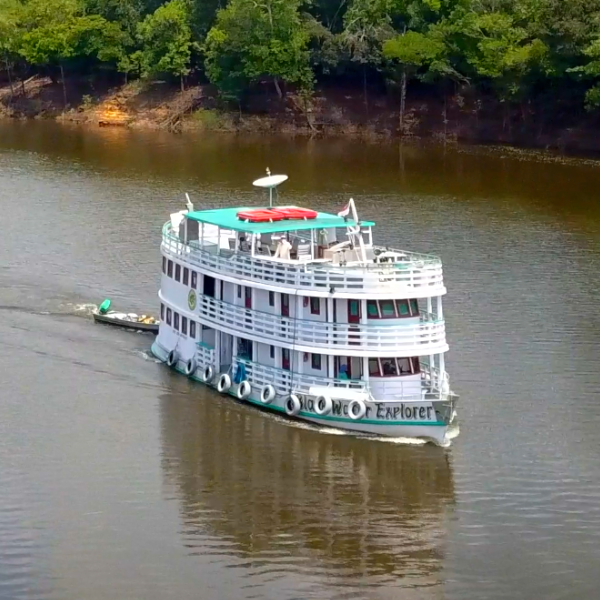
The most consistent fishing trip in the Amazon! This beautiful yacht roams the enormous Rio Negro basin from mid-October through March, concentrating on accessing productive waters.
Floating Bungalows | Brazil
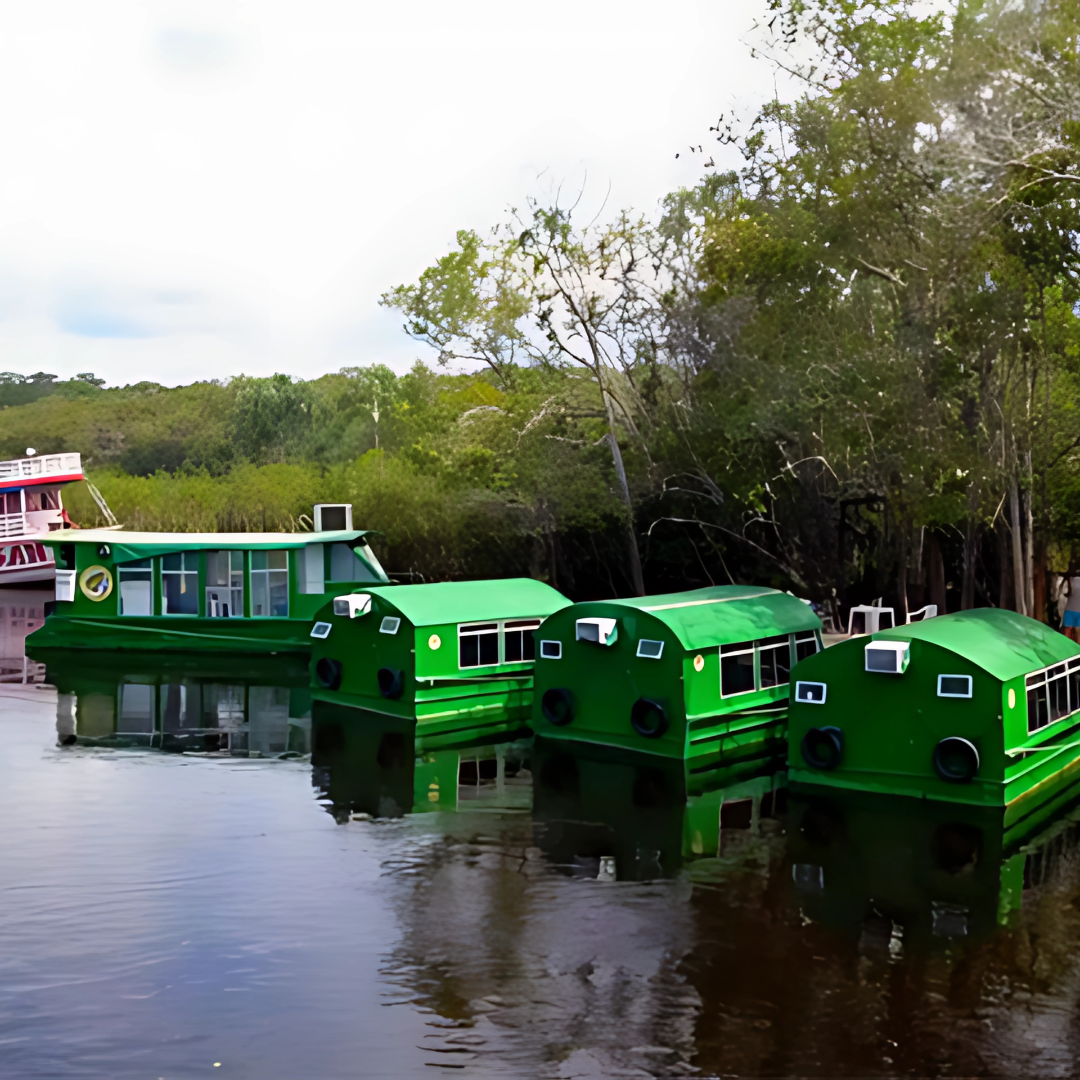
This trip provides a great chance at large peacock bass in an intimate jungle setting. These floating bungalows can take you to the most inaccessible headwaters regions.
Curicuriari | Brazil
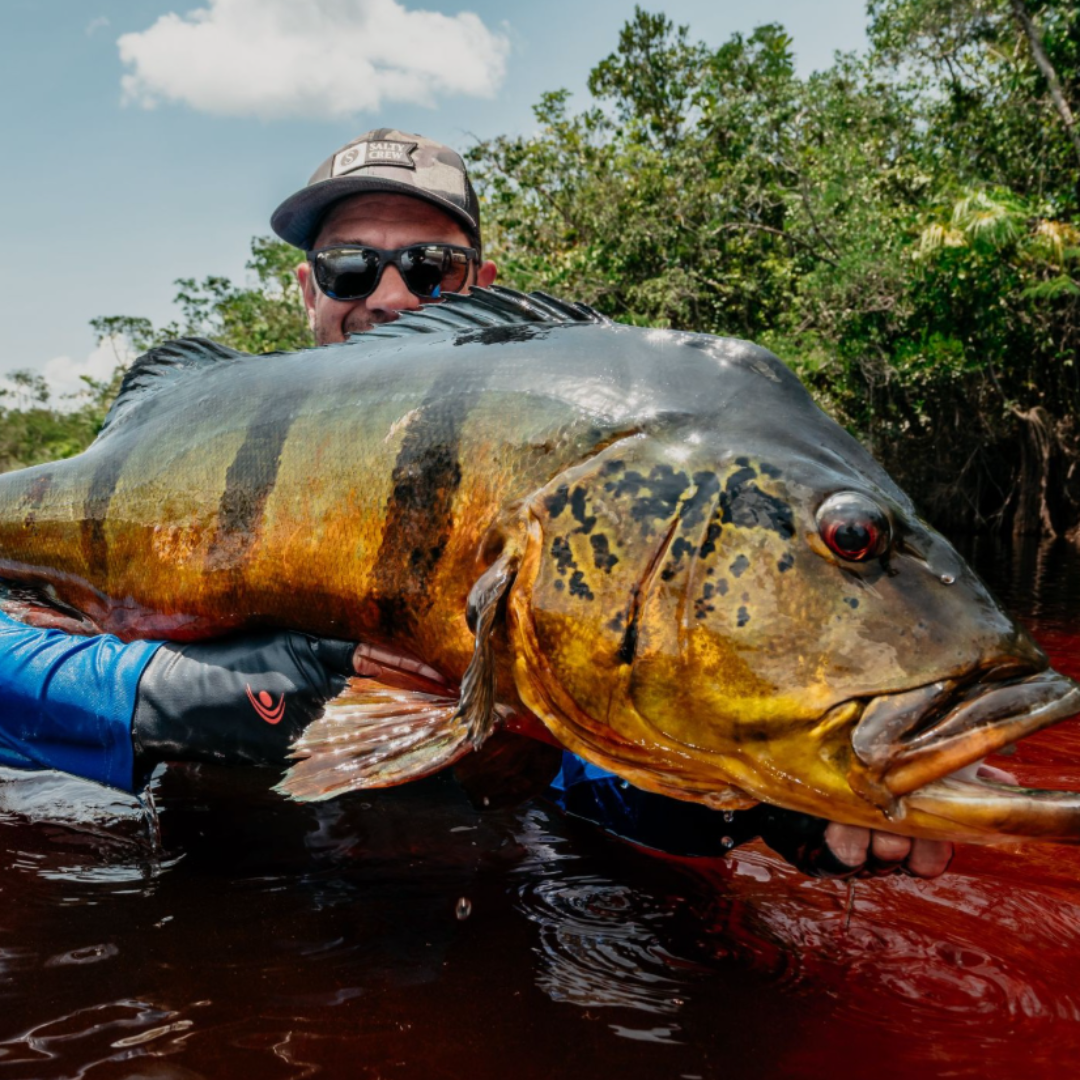
If you're hunting for a real shot at a world-record peacock bass, then this is the place for you. It's already been proven to be a world record class
fishery.
Payara & Multi-Species Trips
Target a wide range of exotic species, including the fearsome payara, also known as the vampire fish. With their long, fang-like teeth and aggressive nature, payara are a top target for adventurous anglers. On our multi-species trips, you’ll also have the chance to catch piranha, bicuda, giant catfish, and more, all in one unforgettable expedition.
Rio Aripuanã | Brazil

With two tributaries, two lakes, and access to the Aripuanã, you'll find diverse aquatic habitats, including creek mouths, rapids, eddies, and boulders, perfect for a variety of fish species.
Xingu River | Brazil
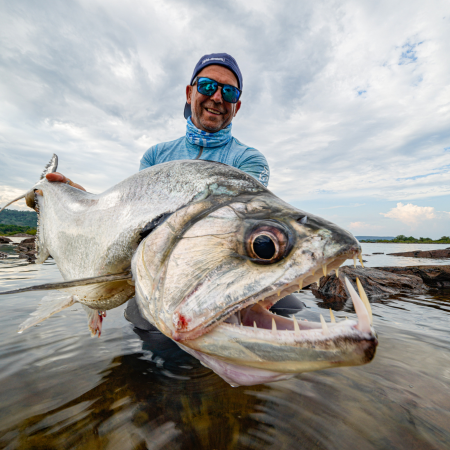
If you’re looking to catch a variety of fish species, then this is the trip for you. Enjoy the diversity of sport fish and the various fishing techniques used to catch them.
Arapaima Day Trip
Arapaima grow over 250 pounds. These giants are found in lagoons and slow brackish water. Their size and strength are incredible, and you will never forget the moment you start reeling in one of these Amazon beasts.
Arapaima Focused Trips
Private Waters | Brazil
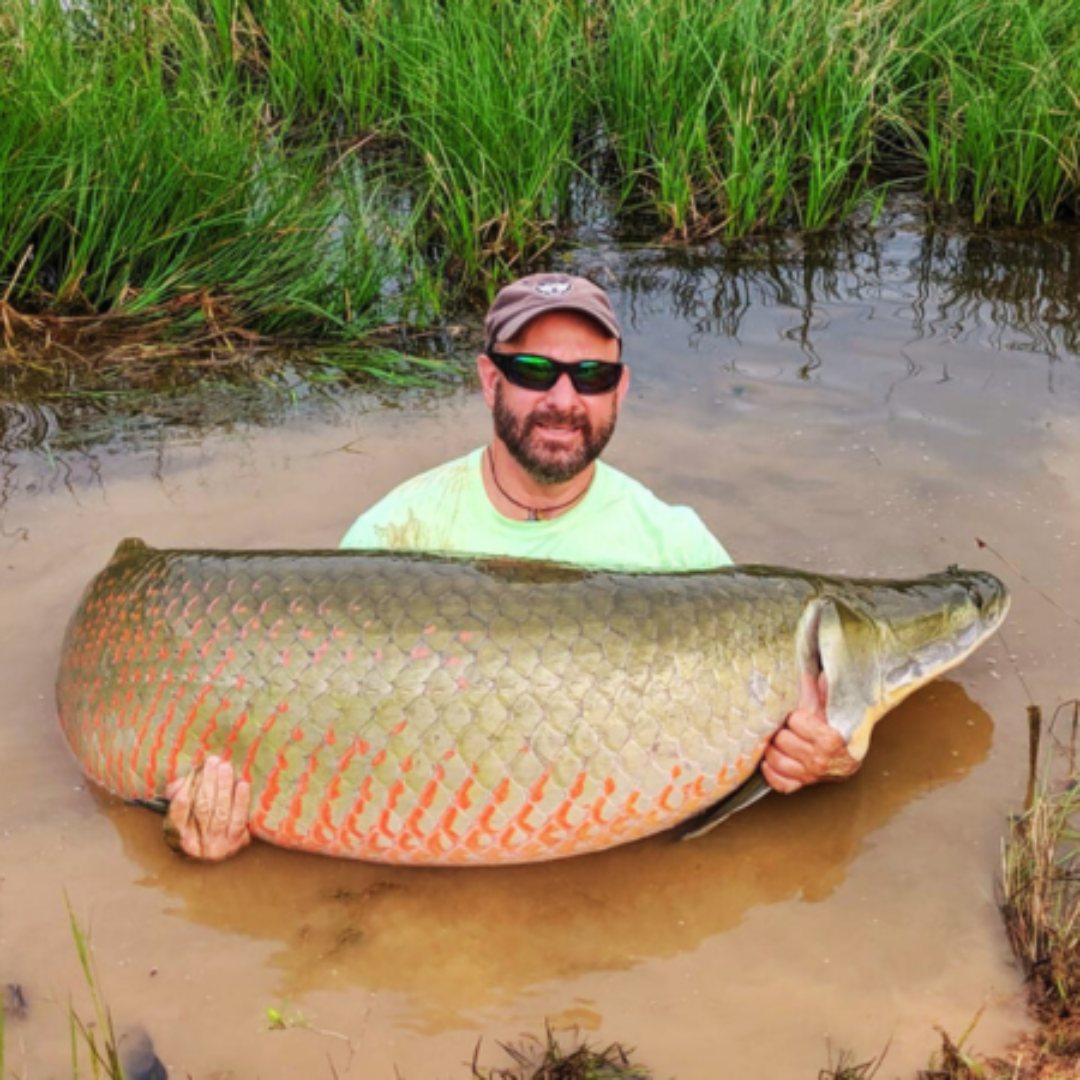
Arapaima can grow more than 200 pounds. These giants are found in lagoons and slow brackish water. Their size and strength are incredible, and you will never forget the moment you start reeling in one of these Amazon beasts.
Arapaima Focused Trips
Golden Dorado Trips
Hunt for the hard-hitting golden dorado, a powerful, acrobatic predator known for its dazzling gold color and aggressive behavior. These apex freshwater fish are a bucket-list target for experienced anglers.
Paraná River | Argentina
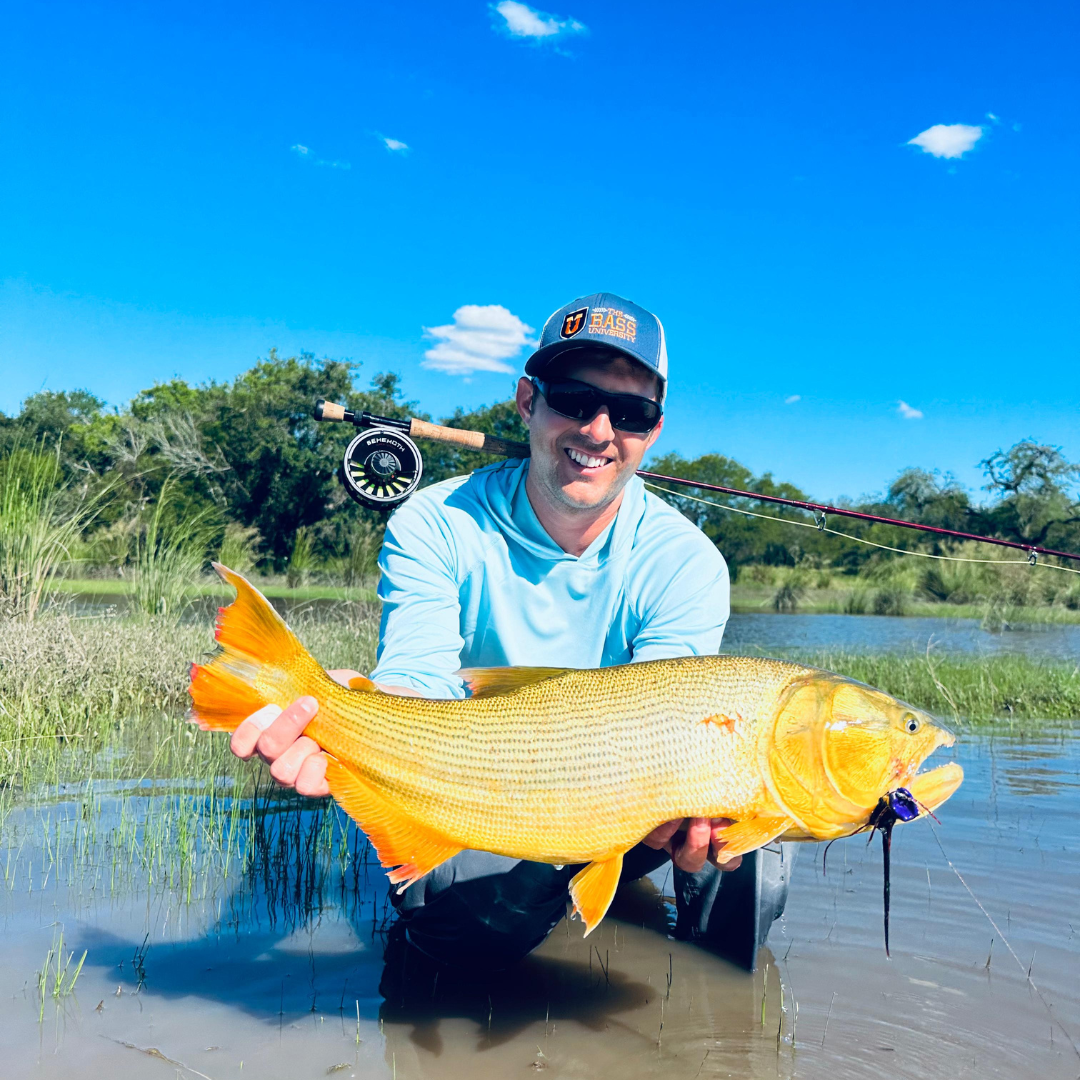
This fishery gives you multiple opportunities to catch Dorados. The Paraná is generally known as an area that delivers a high quantity of fish. When conditions are good anglers typically catch 10-30 dorados a day.
Arapaima Focused Trips
Arapaima Focused Trips
WHAT OUR ANGLERS HAVE TO SAY
Join Us: Get monthly newsletters, discount offers and new content notifications exclusively for our members. Join for FREE below with your name and email.
Join Us: Get monthly newsletters, discount offers and new content notifications exclusively for our members. Join for FREE below with your name and email.
Read Our Newest Blogs
Lorem ipsum dolor sit amet, consectetur adipiscing elit. Aliquam

How to Catch Peacock Bass: A Quick Overview of Tactics and Techniques
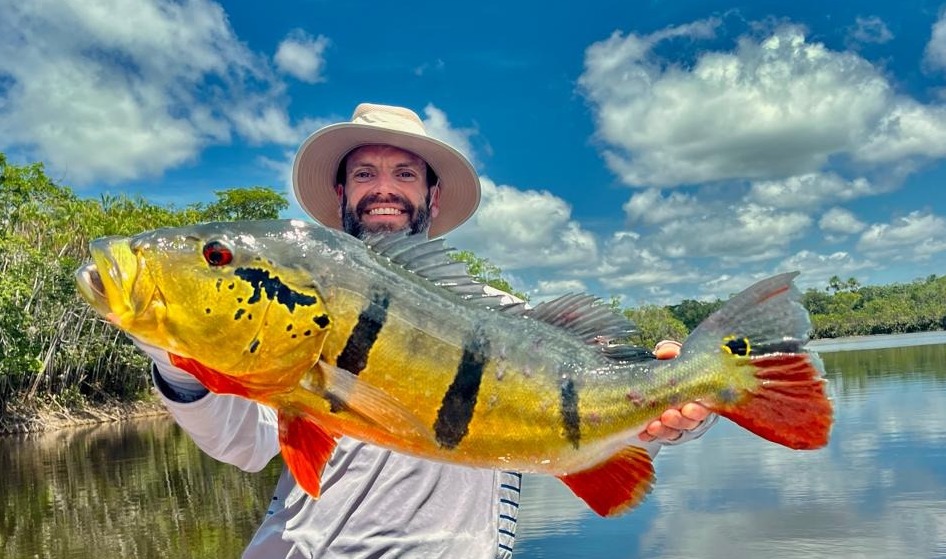
How to Catch Peacock Bass in the Amazon
The Amazon basin is rich with structure that attracts peacock bass, but knowing how to locate and catch them takes more than luck—it takes timing, expertise, and the right guidance.
You won't find giant peacock bass (Cichla temensis) in Florida, Panama, or Hawaii. These record-class fish are native only to the Amazon. And once you're there, the real challenge begins: finding fish in waters that are actually fishable. Water level, temperature, oxygen content, food availability, and spawning cycles all influence where peacock bass will be—and whether they’ll bite.
When water levels are too high, baitfish—and the peacocks chasing them—retreat deep into the flooded jungle. When the water is too low, fish move to deep river channels, where they’re difficult to target. The ideal water level is just below the river’s natural bank line. That’s when peacocks concentrate in backwaters, lagoons, and floodplain structures—prime zones for productive peacock bass fishing.
This is Acute Angling’s single most important role: to put you in the right place at the right time. Our operations are designed to track seasonal movements and position anglers where fish are both present and catchable.

Getting Peacock Bass to Bite
Even in perfect water, you still need to make them strike. Fortunately, peacock bass are aggressive predators that respond well to both visual triggers and motion.
There are two main ways to get them to eat: one is to present a lure they want to ambush, and the other is to provoke a territorial or competitive reaction. Both methods are effective when done right.
This is where your guide comes in. Their job is to match you with the right lure or fly, explain where and how to cast, and help you dial in your presentation. Your job? Trust your guide—and follow their lead.
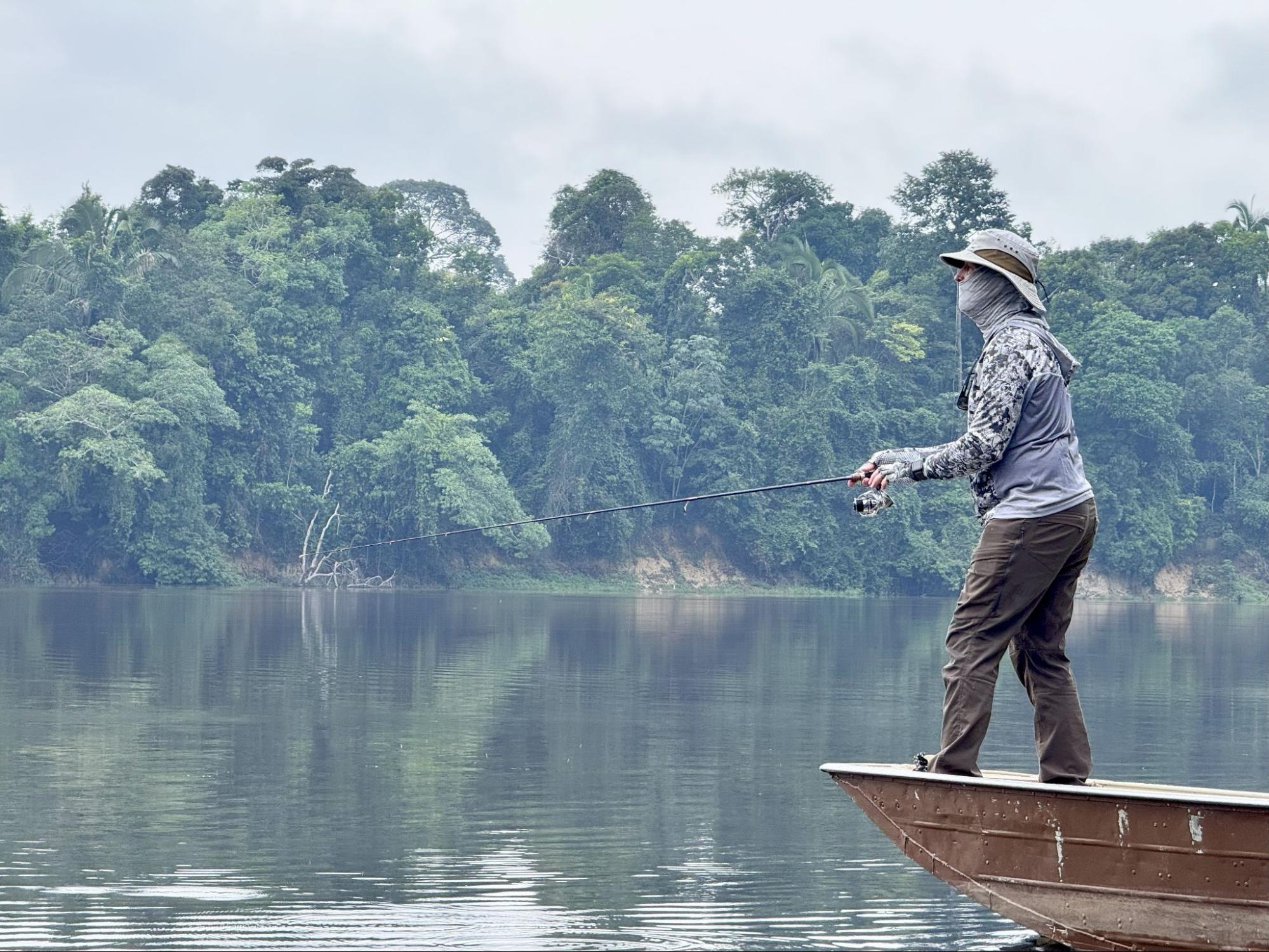
Where to Cast and Why It Matters
Peacock bass are what biologists call “keystone predators”—apex hunters whose presence shapes the ecosystem around them. That means they’re usually tied closely to structure: rocks, log jams, flooded timber, points, submerged brush, and sandbars.
But conditions vary. Peacock bass are sometimes found in open water, especially when guarding fry or patrolling for baitfish. They may also follow schools of bait into unexpected places. That’s why casting strategy changes with the setting. Guides may instruct you to fish tight to wood, fan-cast an open lagoon, or probe transitions between current and slack water.
Precision casting is critical. Even a few inches can mean the difference between a ferocious hit or a complete miss. Make sure to cover water thoroughly and don’t assume an area is empty after one cast. Fish can be holding inches from a log or just below a surface break.
During spawning, peacocks often vacate normal holding spots and build nests on clean, sandy bottoms in three to six feet of water. These beds are usually guarded, and peacocks will attack anything that enters their zone. A well-placed cast can trigger a violent response.
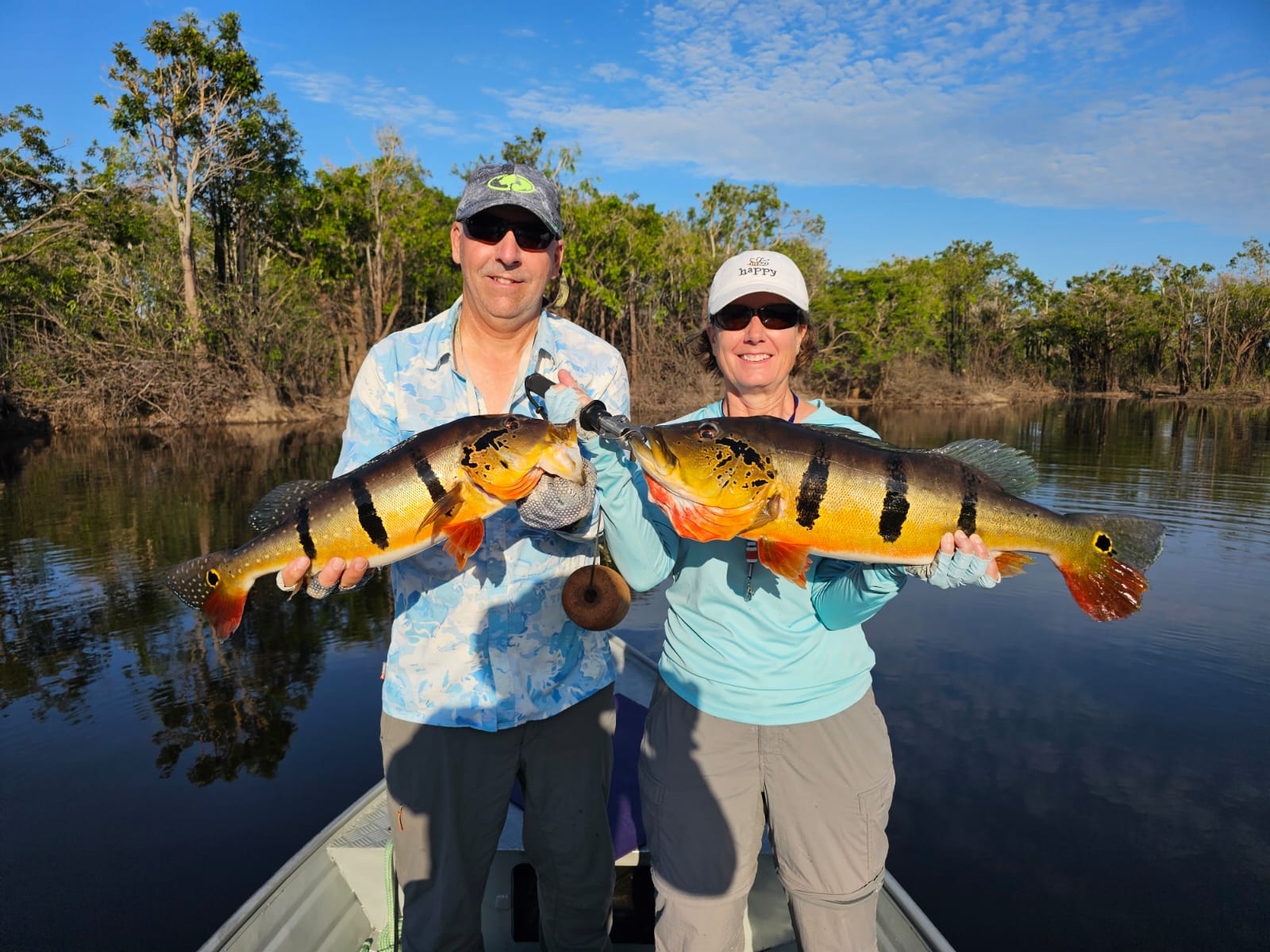
Feeding Frenzies and Fast Action
Peacocks often hunt in small groups. When baitfish are balled up, they’ll charge in and feed aggressively, creating a surface explosion of frothing water and slashing strikes.
When you see this happen, cast immediately into the action. The quicker your lure hits the water, the better your chance at a hookup. Peacocks are greedy and ultra-competitive when in groups. If one fish is hooked, others often stay nearby—drawn to the sound and vibration of the fight.
Always cast near a hooked fish if your partner gets a strike. A second hookup is common. If the action fades, fan-cast the surrounding area. Frenzies may restart without warning.
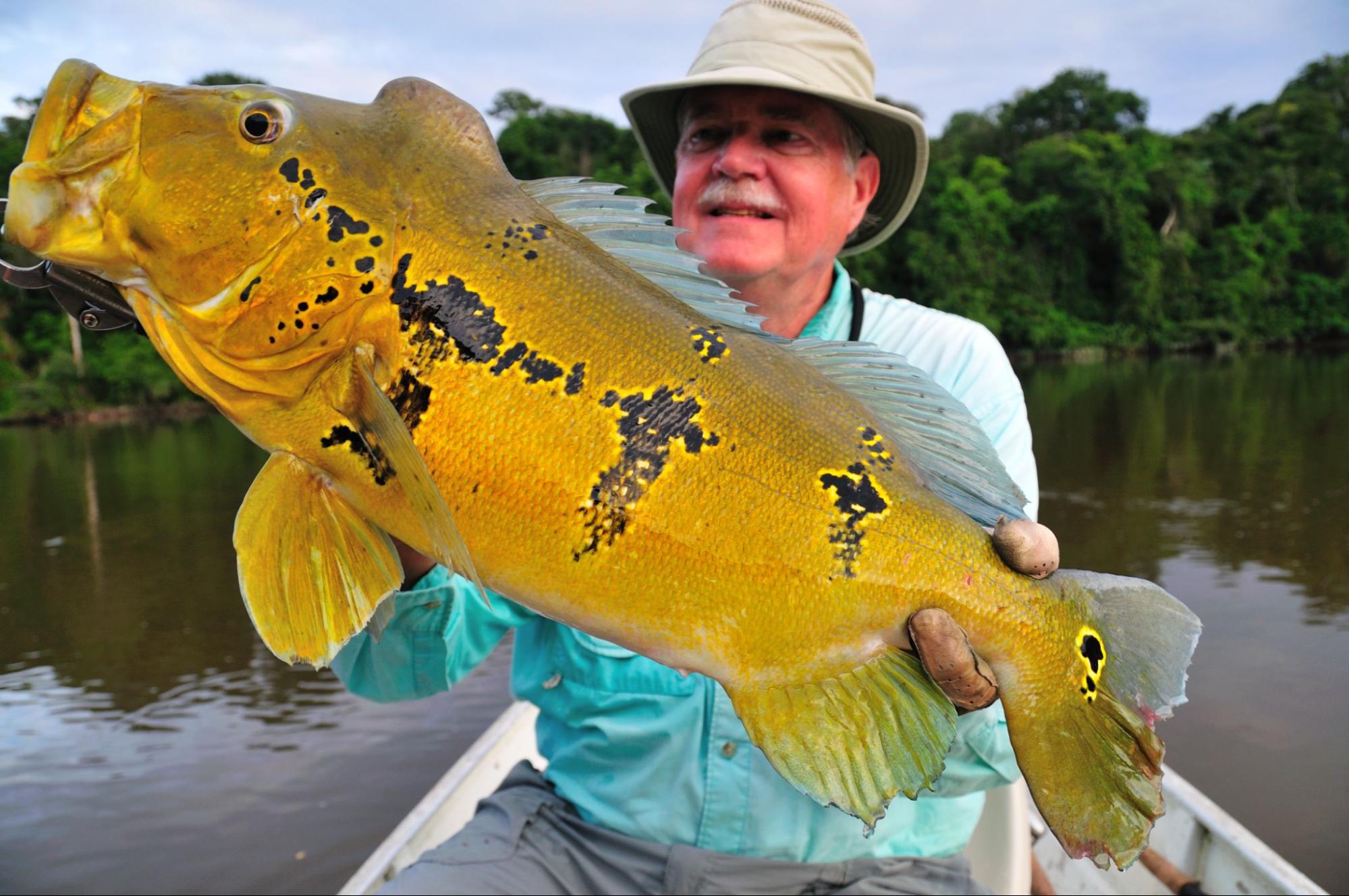
Adapting to Low Oxygen or Heat
During long periods of dry, hot weather, oxygen levels drop in still water. When this happens, peacock bass may move from the lagoons into the main river channel in search of cooler, more oxygen-rich water.
There, they often hold near structure such as rock piles, bushes, points, or deep sandbars. The mouths of lagoons can also become prime holding zones, especially when flowing water draws in baitfish.
Understanding how heat and oxygen influence fish behavior is one of the keys to consistent success—and your guide will factor it into your fishing plan.
Hooking Techniques
Peacocks hit hard—but they don’t always take the lure cleanly on the first pass. They’ll often swipe at or knock a lure into the air before coming back around to eat it.
It’s critical not to set the hook too early. Wait until you feel the fish’s weight. Only then should you drive the hook home with a firm, aggressive set.
Even large peacocks sometimes hold the lure in their mouth without being hooked. Don’t assume a fish is secure just because it’s pulling drag. If your hook isn’t buried, they may let go mid-fight.
If the fish swirls but doesn’t eat, keep the lure moving. A sudden pause often kills the bite. But if they vanish completely, cast a jig or subsurface lure right back to the spot. Many anglers score second or third chances this way.
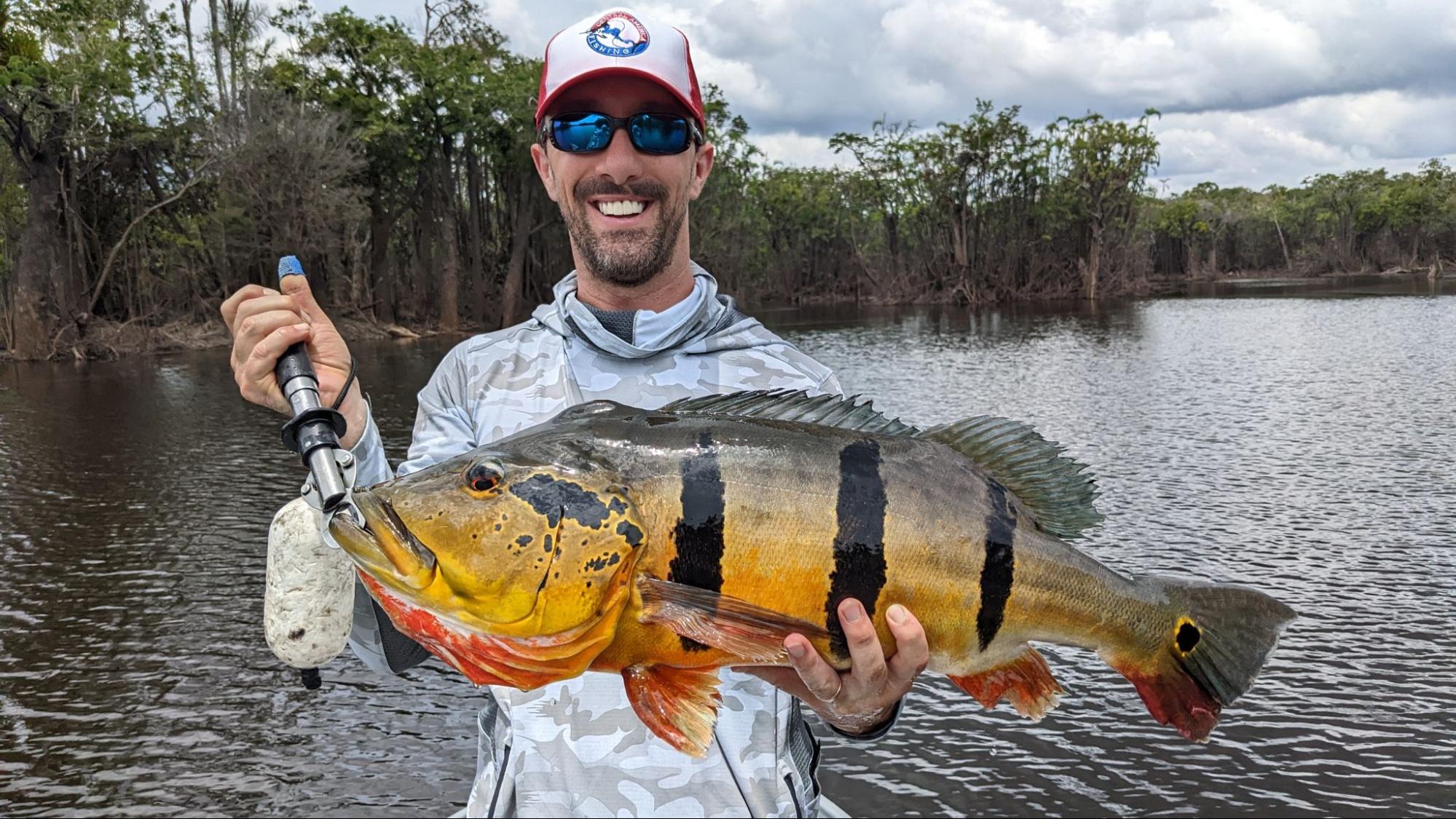
Landing a Peacock Bass
Peacock bass are strong. Very strong. Even mid-sized fish can destroy lures, break hardware, straighten hooks, and snap heavy line.
When hooked, they’ll often head straight for cover. If this happens, apply side pressure—pull the rod low and to the side—to try and steer them out. If you tighten your drag too much, the fish will likely break off. If they make it into cover, don’t give up. Back off the pressure. Often, the fish will free itself, especially when the boat approaches.
Even when they’re near the boat, peacocks are notorious for last-minute surges. Always keep your drag properly set to absorb those sudden runs.
Lure, Fly, and Gear Considerations
Lure choice is influenced by water clarity, light, and time of day. In general, smaller lures or jigs will catch more fish, while large topwater lures like woodchoppers often draw the biggest bites.
Light-colored lures tend to work best in bright conditions, while darker shades are more visible in overcast skies or stained water.
Fly anglers should come prepared with baitfish imitations in varying sizes and colors, including flashy streamers and divers. Stout rods, tropical lines, and aggressive tapers are essential.
Most importantly, listen to your guide. They know what works and when to change. And check out our Lures for Amazon Peacock Bass Fishing article.

Final Thoughts: Fish Smart, Fish Hard
Catching Amazon peacock bass is never just about casting blindly into the jungle. It’s about understanding the fish, reading the water, and adjusting your approach to match constantly changing conditions. Whether you’re tracking down a school of feeding fish or coaxing a reluctant giant from under a log, success comes to the anglers who stay alert, adapt quickly, and trust their guide.
With the right tackle, smart strategies, and an experienced guide by your side, your Amazon fishing trip becomes more than just a vacation—it’s an adventure filled with explosive strikes, hard fights, and unforgettable moments. Whether you’re chasing numbers or hunting for a trophy, there’s nothing quite like the thrill of catching peacock bass in their wild, natural home.
Now join us on a peacock bass fishing adventure!
📧 (866) 832-2987

(866) 832-2987

